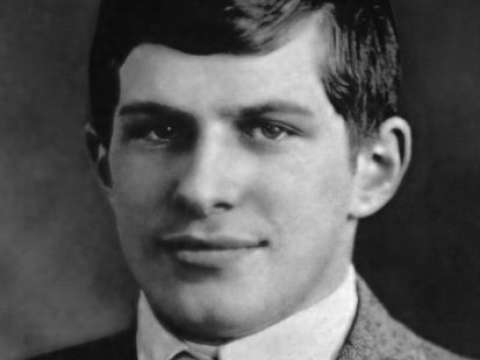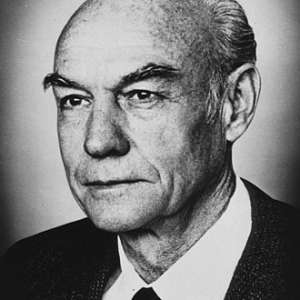

William James Sidis (1898-1944)
I want to live the perfect life. The only way to live the perfect life is through seclusion. I have always hated crowds.
William James Sidis is considered one of history's most accomplished geniuses. He was an American child prodigy with exceptional mathematical and linguistic skills. He is best known for his 1920 treatise The Animate and the Inanimate, in which he proposes a theory of life's origins based on thermodynamics.
Sidis became the youngest person ever to enroll at Harvard University at the age of 11 and was said to have an exceptionally high IQ as well as being fluent in about 25 languages and dialects. Sidis first became known for his precociousness and later for his oddity and withdrawal from public life. Although the allegations have not been proved, several of his contemporaries, such as Norbert Wiener, Daniel Frost Comstock, and William James, supported them.
Biography
Early Life of William Sidis
William James Sidis was born on April 1, 1898, in New York City to Ukrainian Jewish immigrant parents. His father, Boris Sidis, was a psychologist and professor at Harvard University; his mother, Sarah Mandelbaum Sidis, was an educator and social worker. She went to college at Boston University and received a medical degree from the school in 1897. From an early age, William showed signs of high intelligence. At 18 months old, he could already read the New York Times and was soon reading Shakespeare and the Bible. He could also speak French, Russian, and Hebrew by the time he was three years old.
College and University Life of William Sidis
Sidis began attending classes at Harvard University in 1909 when he was just 11 years old. Sidis was a prodigy who excelled in higher mathematics, and his knowledge of the subject was such that he taught the Harvard Mathematical Club about four-dimensional bodies, which attracted national attention. He graduated from Harvard cum laude in 1914, at the age of 16, with a degree in Bachelor of Arts.
"Karl Friedrich Gauss is the only genius in history, of all prodigies, to whom Sidis resembles," said Daniel F. Comstock, a PHYSICS professor at MIT. "I predict that young Sidis will be a great astronomical mathematician. He will develop new ideas and devise innovative methods of calculating astronomical events. I believe he will become a superior mathematician, perhaps the leader in his field in the future."
After graduating from Harvard, Sidis briefly worked as a reporter for The Boston Globe. His first crush was on Martha Foley, who was one year older than he. He subsequently enrolled at Harvard Graduate School of Arts and Sciences, where he studied for three years.
Sidis' Continuing Education and Teaching
Sidis's parents obtained him a position as a mathematics teaching assistant at the William Marsh Rice Institute for the Advancement of Letters, Science, and Art (now Rice University) in Houston, Texas, after a group of Harvard students threatened Sidis physically. At the age of 17, he enrolled at Rice in December 1915. He was a graduate student working toward his doctorate degree.
Sidis taught three courses: Euclidean geometry, non-Euclidean geometry, and freshman mathematics (he wrote a book on Euclidean geometry in Greek). Sidis was enraged by his department, his teaching responsibilities, and the treatment he received from pupils who were older than he was. Sidis quit after less than a year and went back to New England, dissatisfied with the job, the amount of education required, and the treatment he received from children who were older than himself.
When he asked why he departed, a friend responded, "I have no idea why they hired me—I'm not much of a teacher. I didn't leave: I was asked to leave my studies. Sidis abandoned his pursuit of a graduate degree in mathematics and enrolled at Harvard Law School in September 1916, but he withdrew from the school in excellent standing before his graduation in March 1919.
William Sidis' Abilities and Professional life
In addition to his mathematical abilities, Sidis was also an accomplished linguist. He was said to be able to speak around 25 languages and dialects, including Esperanto, Latin, Greek, Russian, Yiddish, German, French, Hebrew, Welsh, Turkish, Armenian, and Sumerian, and invented another, which he called "Vendergood."
Sidis' IQ has been estimated to be between 250 and 300. This would make him a genius or near-genius by today's standards. In 1919, Sidis published his first book, The Animate and the Inanimate, in which he proposed a theory of life's origins based on thermodynamics.
Sidis predicted the existence of areas of space where the second law of thermodynamics would be in reverse to our current temporal progression. Such a place would encompass everything outside what we consider a galaxy today.
Sidis was a "peridromophile" (a fancy name for someone interested in transportation research and streetcar systems), as well as the creator of the term. He established a company to publish his ideas on creating more efficient railway transfers under the pseudonym of "Frank Folupa."
Despite his brilliance, William James Sidis is largely remembered for his eccentricities and withdrawal from public life. Nevertheless, he made significant contributions to the fields of mathematics and thermodynamics, and his work continues to be studied by scholars today.
Sidis' Arrest and the Political Debate
In May 1919, Sidis was arrested for taking part in a political rally in Boston that turned violent. The rally was in support of the Boston Police Strike of 1919, and it degenerated into a riot. Under the Sedition Act of 1918, he was sentenced to 18 months in jail by Roxbury Municipal Court Judge Albert F. Hayden. Sidis' arrest was covered by news media since his early graduation from Harvard had made him a local celebrity.
The case against Sidis generated a great deal of public debate. Some people argued that he should be pardoned because of his young age and genius status, while others believed that he should be punished to set an example. After his arrest, Sidis' parents hired a lawyer to help keep him out of trouble and away from the public eye. He was sent to an insane asylum in California for another year after that. His parents attempted "reforming" him at the sanatorium, and he was threatened with transfer to an insane asylum if he didn't cooperate.
Sidis Language Vendergood
In addition to inventing the term "peridromophile," William James Sidis also created his own language, which he called "Vendergood." Sidis' language was designed to be an international auxiliary language that would be easy to learn and serve as a common mode of communication for people of different cultures.
The language was largely based on Latin and Greek, but it also utilized German and French, as well as other Romance languages. The moods of the English language include indicative, potential, imperative, absolute, subjunctive, imperative, infinitive, optative, and Sidis's strong able.
Sidis published a number of books on the subject of Vendergood, including a grammar book, a dictionary, and a collection of short stories. While Vendergood never gained much traction outside of Sidis' own circle of friends and acquaintances, it remains an interesting example of a constructed language.
Later Life and Death
In later life, William James Sidis withdrew from public life and became increasingly reclusive. He changed his name to "William Jameson" and worked a series of menial jobs, including a stint as a janitor at an insurance company. Sidis yearned to live an independent and private life after returning to the East Coast in 1921.
He grew up in New York City and distanced himself from his parents. It took years for him to be legally permitted to return to Massachusetts, and he was concerned about being arrested for years. He was a railfan, collecting transit tickets and publishing self-published periodicals. He also taught small groups of interested friends his version of American history.
Sidis took the New York Civil Service Exam in 1933 but scored a low grade of 254. Sidis stated in a private letter that this was "not particularly encouraging." He wrote an unfinished book in 1935, The Tribes and the States, which examines Native American contributions to American democracy.
In 1944, Sidis won a settlement from The New Yorker for an article that had been published in 1937. He claimed it contained many false assertions. In "Where Are They Now?" under the pen name of James Thurber, he depicted Sidis's life as lonely, in a "uselessly old hallway bedroom" in Boston's shabby South End.
"Imagine my excitement and joy on being handed this xerox of Sidis' 1925 book, in which he clearly predicts the black hole. In fact, I find his whole book, The Animate and the Inanimate to be a fine cosmological piece. I find him focusing on the same subjects that fascinate me, and coming to about the same conclusions as those I have published in SYNERGETICS, and will be publishing in SYNERGETICS Volume II, which has already gone to the press.
As a Harvard man of a generation later, I hope you will become as excited as I am at this discovery that Sidis did go on after college to do the most magnificent thinking and writing."
Death Reason of William James Sidis
Sidis' health began to decline in the 1930s, and he died of a cerebral hemorrhage in 1944, at the age of 46. His death was widely covered in the press, and his life story continues to be of interest to scholars and laypeople alike.
While Sidis is no longer with us, his legacy as one of history's most brilliant minds lives on.
Awards and Achievements of William James Sidis
- The youngest person to enroll at Harvard University
- Significant contributions to mathematics and thermodynamics
- Creator of the term "peridromophile."
- Established a company to publish his ideas on efficient railway transfers
- Invented his own language, called "Vendergood."
- Published a number of books on Vendergood, including a grammar book, dictionary, and collection of short stories
- Won a settlement from The New Yorker for an article that contained false assertions about his life
- Depicted in "Where Are They Now?" under the pen name of James Thurber


































